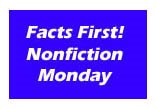Let’s start our exploration of some of the children’s nonfiction recently nominated for the Cybils awards by taking a look at the middle grade science book How to Make a Planet: A Step-by-Step Guide to Building the Earth by Scott Forbes and illustrated by Jean Camden.
Following a timeline set out in the beginning, this ambitious book races through the consensus of what scientists have discovered about our universe so far, from the best estimate of the time of the Big Bang (13.7 billion years ago) to when the Earth formed (4.7 billion years ago) to modern times using the premise of building a planet as a way to keep the information focused. At the same time, the text hurtles through various fields of science, encompassing astronomy, physics, chemistry, earth science, geology and even biology. Although it covers so much territory, it is still easy to read and understandable because Scott Forbes has done an excellent job of organizing and condensing the material. The book will help make big numbers and mind-blowing concepts accessible to everyone.
Young readers are likely to be drawn in by the cool cartoon illustrations by Jean Camden. Many of the illustrations help summarize or illuminate concepts as well as keeping readers hooked. The contrast between some illustrations being two dimensional and drawn with a limited range of colors versus others that are bright and three-dimensional also adds interest.
Some may criticize that Forbes did not reveal contrasting ideas about some points or even swerve into the realm of “we don’t know,” which are the things scientists work on and are most excited about. To his credit, the book is written to show the middle ground of current consensus, which is what makes it work for this audience. To properly consider other options would have required a much longer book and would have necessarily restricted the scope of information he was able to cover.
The book ends with a chapter about taking care of our planet. One thing that comes out of reading is how unique the formation of the earth is, and how unlikely it is that we could ever find a replacement. When you look at it that way, taking care of our home is the only way to go.
How to Make a Planet is a great jumping off point for units on astronomy, the solar system, and the planets. It is also a fabulous resource for budding scientists trying to get a handle on the big picture of our universe. See what it takes to build a planet and scientific understanding at the same time.
Age Range: 8 – 12 years
Grade Level: 3 – 7
Publisher: Kids Can Press (March 1, 2014)
ISBN-10: 1894786882
ISBN-13: 978-1894786881
Disclosure: Book provided by my local library. I am an affiliate with Amazon so I can provide you with cover images and links to more information about books and products. As you probably are aware, if you click through the highlighted title link and purchase a product, I will receive a very small commission, at not extra cost to you. Any proceeds help defray the costs of hosting and maintaining this website.

Looking for more children’s nonfiction books? Try the Nonfiction Monday blog.


